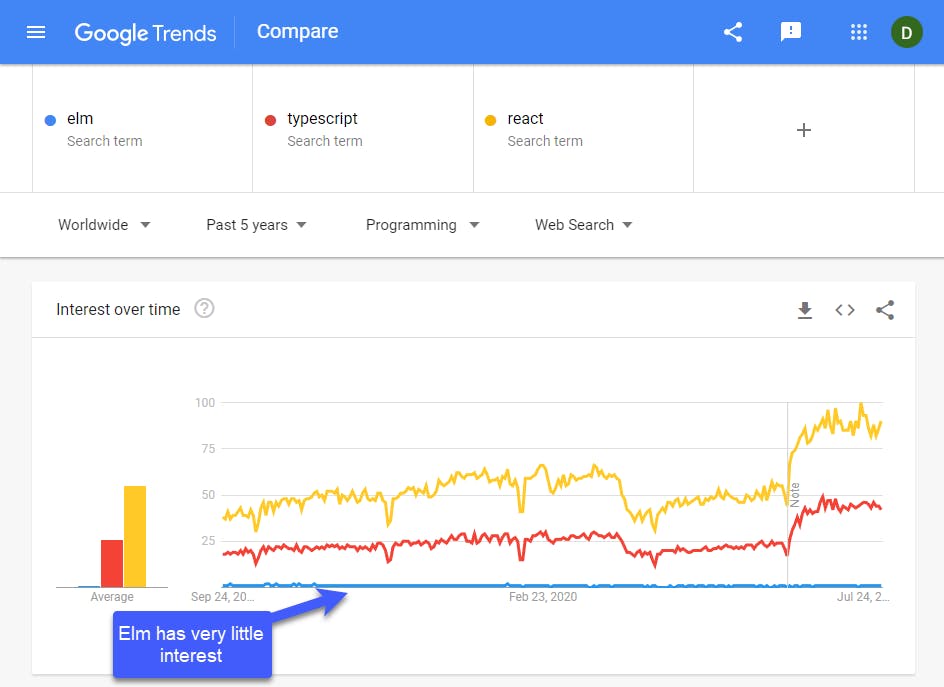Some decisions are tough. You need some good reasons to avoid Elm, but you can't just say NO. Here are three decent reasons to avoid Elm for the front-end.
Why me? I created a Pluralsight course about the fundamentals of Elm 0.19. Also, I wrote three reasons to use Elm for the front-end, to argue the other way around.
Too stable
Elm is too stable, some argue it's stale: latest release is from October 2019, which is like medieval times in JavaScript years.
Evan Czaplicki - the brilliant creator of Elm - added a roadmap in February 2021. TLDR: high quality, no hurry. He has kept his promise.
Small community
It's a niche tool, so the community is relatively small. How about community events? Well, elm-conf was cancelled in 2020, due to 'reduced organizer capacity.' Still, Elm Slack has about 22k members. Despite its small size, the community is active and helpful.
Frozen perspectives
What are Elm's long-term perspectives? If we were to think of Elm as a stock, what can we expect from it?
Look at this Google Trends picture, which compares Elm, TypeScript and React :

Elm looks frozen: stable, small, and no expectations of some sudden future increase. Still, it pays dividends by offering high-quality and stability.
Bottom line
Elm is very stable, the community is too small, and its future perspectives are frozen for now.


